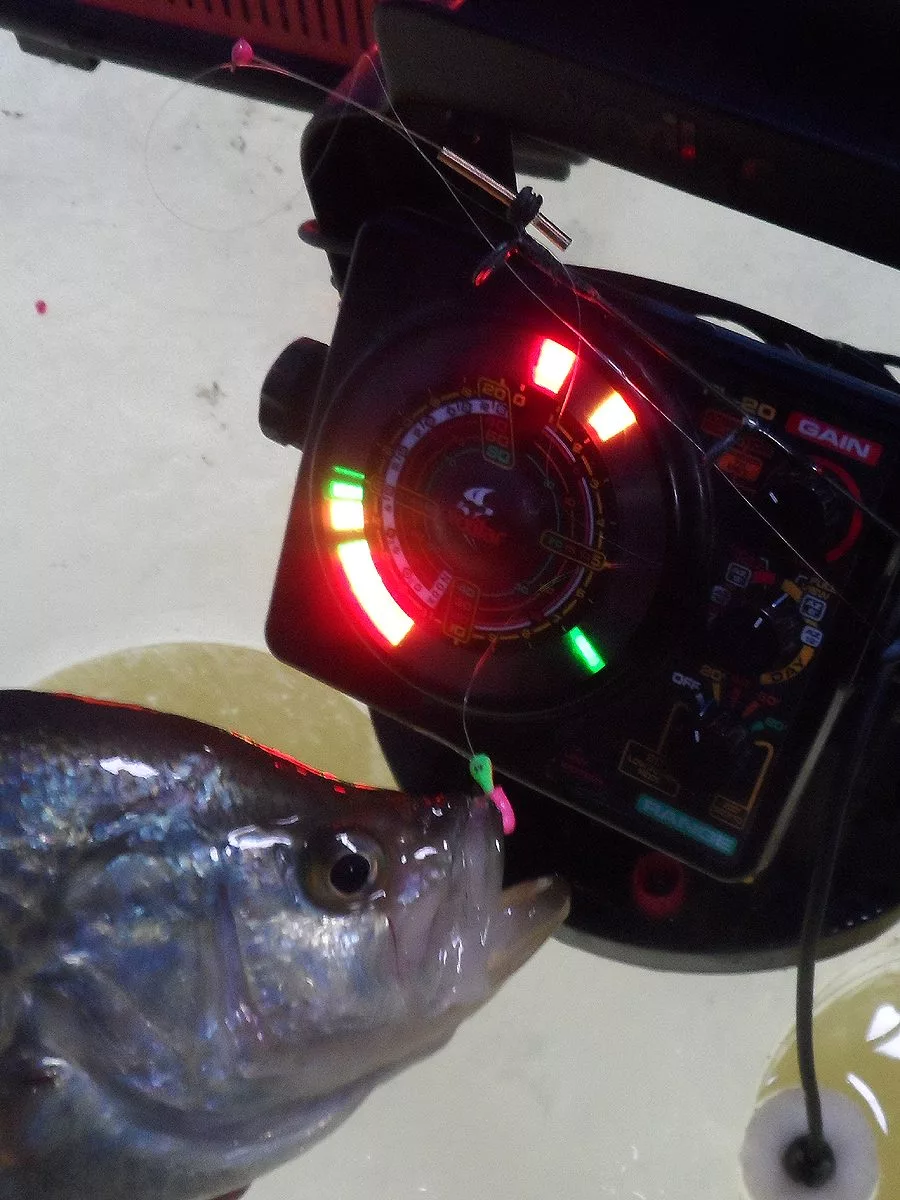
The Small Hours. Food sources get scarcer and smaller for panfish like crappies at mid-winter. Offer up a smaller lure and bait combo to catch them. Simonson Photo.
By Nick Simonson
The lean months have arrived, and if the sub-zero readings on your thermometer as you fire up the truck and head to your favorite frozen water aren’t an indication of how tough things are this time of year, the behavior of some favorite panfish under the ice certainly will be. Winter brings with it challenging times for bluegills and crappies, and a shift in their diet from the abundant forage of small fish and larger insects in summer and fall to what remains, means anglers have to adjust to what’s on the menu for these popular pannies in order to bring them up their chosen ice hole.
Bull bluegills and big crappies can take down an adult minnow if given the opportunity, and snapping up these morsels is no problem in warm water. But as the supply of these protein-packed prey items dwindles into winter, and other young-of-the-year fish mature out of the edible stage for these panfish this time of year, ‘gills and specks turn to what’s available. Predominantly, their wintertime prey are very small food items from the near-microscopic daphnia and zooplankton to tiny aquatic worms and larval insect stages living on the substrate of a frozen lake, especially those mud-bottomed basins at their centers. Additionally, small crustaceans like freshwater shrimp species can be a wintertime mainstay for panfish, sustaining them during this lean time. In the end, the adage that will translate over from fly fishing of “half inch and buggy” is a good idea when targeting bluegills and crappies through the ice at mid-winter.
This means some downsizing is in order. Jig as small as 1/100 of an ounce for bluegills, and 1/64-ounce for crappies help imitate these smaller prey items and are comparable in size. Dressed either with a maggot, a waxworm or an artificial imitator such as a piece of Berkley Gulp! bait or tiny plastic tails, smaller jigs help provide the profile these panfish are already keyed in on, making for a package that looks similar to what’s for dinner under the ice right now.
Wintertime movements and jigging patterns should also match the subtlety of these small creatures which rarely make dashing movements. Instead, a slight jiggle of the rod tip or a squeeze or twitch against the cork handle is enough to mimic the minor moves these targets make under the water. Test a few patterns out while a lure is in the ice hole to see how baits and dressings react to small twitches, squeezes and taps on the rod so you have an idea what the fish is seeing below. If you have a chance to watch how a scud swims or how a damselfly larvae moves through the water, you’ll get a better idea on how to mimic that minor motion.
Target those areas where the prey resides – muddier bottoms for aquatic worms and other smaller crustacean species – and it’s likely you’ll find midwinter bluegills and panfish prowling the region as well, snapping up snacks as they are able. Start low in the column near the bottom, especially during brighter periods, but don’t be afraid to go up as the day wears on, low light settles in and fish rise on those invertebrates, insects and other feeding targets move up as well.
Winter provides challenges for us all, with cold temperatures, sudden shifts and changes in pressure that can put the brakes on good fishing. Adjust first to where panfish are likely to be, and what they’re focusing on for food this time of year, and make the best possible presentation of something similar to connect with them for the most success at midwinter.
Simonson is the lead writer and editor of Dakota Edge Outdoors.
